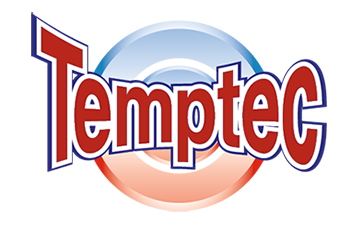Data Centers
The challenge for data center managers is to maintain or improve availability in increasingly dense computing environments while reducing costs and increasing efficiency. Even though data centers are strategic business assets that continue to grow in importance, data center managers are under pressure to optimize operational expenses and reduce energy consumption without risking downtime.
Dynamic Air Quality Solutions offers proven technologies to improve power usage effectiveness (PUE) without impacting system availability.

Previous generations of data center HVAC systems had to operate at full capacity all the time regardless of actual load demands. And Uninterruptible Power Supply (UPS) systems operated most efficiently at full load although full-load operation is the exception rather than norm. A lack of flexibility in the power and cooling systems led to inherent energy inefficiency which has created a large opportunity for HVAC energy savings which can account for 35 percent of data center energy costs.
In any building using pre and post filtration of MERV 8 and 13 or even higher, Dynamic can reduce mid-life static pressure by more than 1 inch and design static by more than 1.75 inches. Lower static pressure corresponds directly to lower brake horsepower. Brake horsepower drives fan energy and so on. With Dynamic Air Cleaners, and using the prescriptive option under section 6.5.3 of ASHRAE 90.1, engineers can reduce energy and provide every customer with a payback worth investing in.
Dynamic Air Cleaners integrate perfectly with newer data center cooling technologies that utilize variable speed fan drives to adapt to changes and deliver high efficiency at reduced loads, which can result in fan energy savings of 50 percent or more.
Using an example of a 34,000 cfm air handler and a $.16 blended utility rate, using a Dynamic V8 Air Cleaning System instead of 85% cartridge filters can save over $8,000/year in fan energy costs. Just from the reduction in static pressure in this model, design brake horsepower is reduced 14.3 bhp.
How much of a challenge is it for companies to upgrade their cooling equipment? What kinds of energy efficiency benefits can data centers expect to gain from upgrading their cooling equipment? What should a company consider (about their data center, about potential products) when choosing new cooling equipment?
Cooling equipment upgrades can come in many forms. Energy cost savings and operational cost savings can depend on the type of equipment, geography and climate. One common approach is to save energy by using more outdoor air for pre-cooling. This allows facilities to conserve cooling energy. However, the use of more outdoor air can increase the potential exposure to hazardous airborne contaminants. This could result from a slow and gradual increase in ultrafine particles and VOCs from pollution such as automobile exhaust or one single large scale event such as a forest fire. Air filtration can play a big role here. There are air cleaning systems available today that can effectively clean incoming ventilation air and recirculated indoor air and can do so without the large energy penalty.
How does air quality impact overall data center efficiency, and energy efficiency in particular? What impact do air cleaning systems have on data center equipment and energy efficiency? What should a company consider (about their data center, about potential products) when choosing an air cleaning system?
Historically, filter efficiency has been at odds with energy efficiency. This is no longer the case. With mechanical filters, static pressure resistance increases as filter efficiency increases. Most data centers use MERV 13-16 filtration to control particles in the 0.3 to 1.0-micron range. The higher the efficiency, the higher the pressure drop and the higher the brake horsepower. Higher brake horsepower translates to more fan energy required to deliver the required air flow. Today there are high efficiency filter technologies available with pressure drops that are far lower than high-efficiency passive filters. This technology can sometimes allow HVAC system designers to use smaller fans. The filter technology offers dust loading capacities and the ability to remove ultrafine particles (those smaller than 0.3 microns) and black carbon from automobile exhaust. They operate at low static pressures for longer intervals. In the case of the Dynamic V8 Air Cleaning System, filter service life is measured in years instead of months which translates to additional operational savings to boost PUE.

